Traditional
June 30, 2015Traditional kitchens can be recognized by the detail and flourishes in their construction. Ornamental trim such as crown and/or rope molding are a simple way to get this timeless look. Columns, curves and arches add architectural flair for a hand-built appearance. Corbels and valences are excellent ways to smooth the stark lines of cabinetry. The primary source of detail and defining style is the cabinet doors, which are predominantly a variation of the center raised panel doors. These can either echo flourishes elsewhere, or be the most ornate aspect of the kitchen, and either way will evoke the traditional feel.
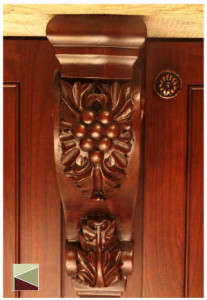
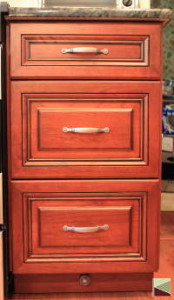
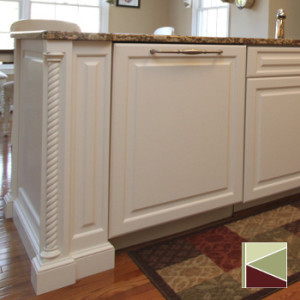
Traditional kitchens are inspired by the era following the invention of the stove. It was about this time that kitchens first started being the heart of the home. Those who built full-service kitchens indoors did so with great care, and the effort they put into making the kitchen beautiful and useful has never been forgotten.
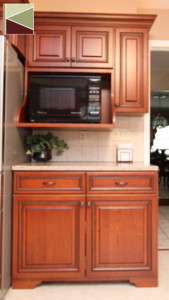
The Illusion of Furniture
Much of the styling details of traditional kitchens are meant to evoke the feel of a collection of cupboards assembled over the years. The reality of a cupboard collection can be ungainly and a bit overwhelming to the eye. On a set of cabinets, furniture-style details suggest that look in a sleeker, more streamlined and easier to care for manner.
There are many ways to achieve this look, including feet, varied depth/height, arched toe kicks on the bottom, and decorative corbels on upper cabinets. Furniture-style touches can be seen on the cabinets to the left as well as others on this page. Furniture panels are decorative fronts that can allow modern appliances to blend in for a more seamless antique look without giving up any modern features.
Traditional kitchens do very well mixed with antiques and finished with antiquing glazes to emphasize the appearance of age. A few antique accessories like cast iron pots are all a traditional kitchen needs to take it right out of this century.
Natural materials were generally all that were available at the time this look was established, so a finish that shows a wood grain is a frequent choice. Stains were usually dark, so as to be more resistant to showing damage and wear.
In our modern times, with much more options at our fingertips, white versions of the traditional style are immensely popular.
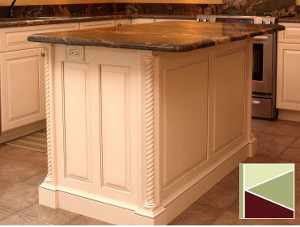
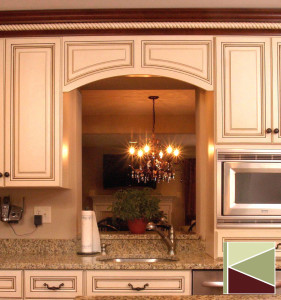
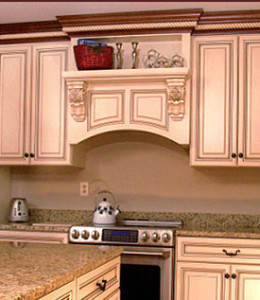
The grandeur and formal elegance of the traditional kitchen can be a little overwhelming for some, and there are six (count ’em, six!) variations on this style, each a little more relaxed in its own way.
Simpler approaches include Cottage and Transitional style,
Rustic is less polished and more natural,
Country and Old World are less formal and more cozy.







